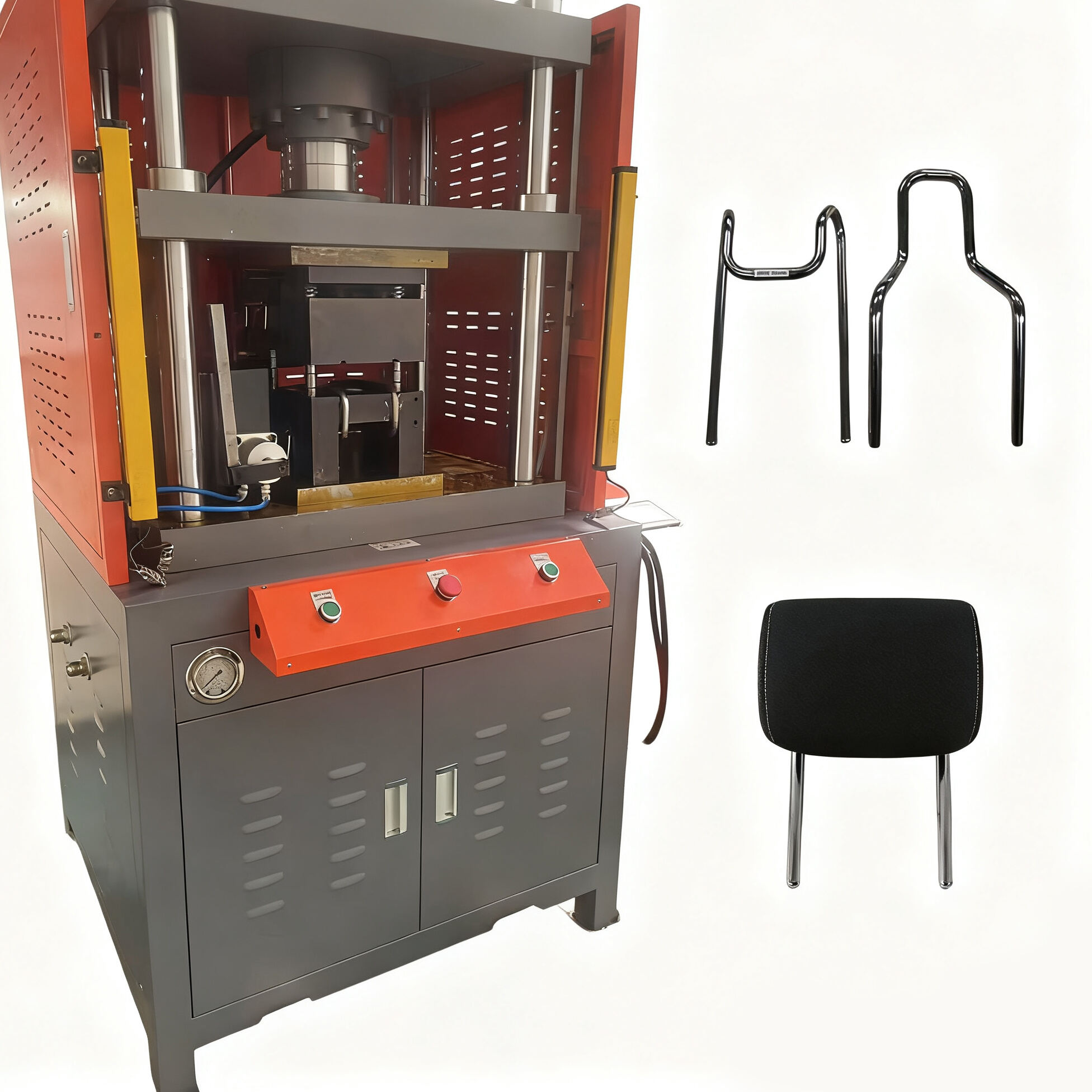As a core safety component of automotive seats, headrest rods require both support stability and assembly precision. Their complex bending paths (one forward, one backward) and the need to process thin-walled tubing (0.5-3mm) have long plagued export production. Traditional single-head assembly equipment is prone to problems such as bending interference and tube wall damage, with angular errors exceeding ±0.3°. This results in an assembly compatibility rate of less than 85% with overseas automakers and a persistently high return rate. Furthermore, mold changeover and debugging require more than 30 minutes, making it difficult to meet the demands of export orders for "multiple specifications and fast delivery."
The fully automatic double-head pipe bending machine specifically addresses industry challenges, becoming a "precision tool" for headstock rod output. The equipment employs an independent drive design for both left and right heads, coupled with a customized clamping device, perfectly resolving bending interference issues and significantly improving workpiece stability.
In the context of globalized trade, this equipment has a significant enabling effect: a single unit can produce 2,000 headrest rods per day, 2.5 times more than traditional equipment. One auto parts company secured an annual order of 800,000 headrest rods from a North American automaker using this equipment, shortening the delivery cycle by 35%. Standardized processing reduced the return rate for exports to the European market from 10% to 0.6%. The multilingual operating interface and remote fault diagnosis function solve the technical maintenance problems of overseas customers, improving after-sales response efficiency by 70%. Today, this fully automatic pipe bending machine is becoming a "core support" for the export of headrest rods, helping companies enter the global high-end automotive supply chain.

